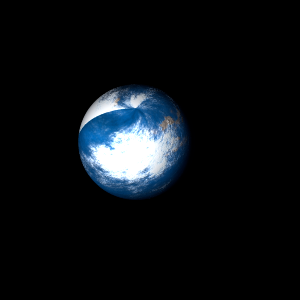|
|
Space Astro
|
Info for exoplanet "Thegel Per"
| Scientific (actual) data |
|---|
| Name | K2-221 b |
| Planet status | Confirmed |
| Radius | 0.15 |
| Orbital period | 2.39909 |
| Inclination | 85.447 |
| Discovered | 2018 |
| Updated | 2021-02-05 |
| Tconj | 2457400 |
| Publication | Published in a refereed paper |
| Detection type | Primary Transit |
| Alternate names | 2MASS J01063719+1011231 b, EPIC 220650439 b, EPIC 220650439.01, WISE J010637.20+101123.0 b |
| Star name | K2-221 |
| Right ascension | 16.66° |
| Declination | 10.19° |
| Mag j | 11.229 |
| Mag h | 10.884 |
| Star distance | 321.63 |
| Star metallicity | 0.13 |
| Star mass | 1.01 |
| Star radius | 0.95 |
| Star temperature | 5716 |
| Star alternate names | 2MASS J01063719+1011231, EPIC 220650439, WISE J010637.20+101123.0 |
| Wikipedia article | K2-221 b |
Back
| |
| Fictional info (?) |
|---|
| Suggested name | Thegel Per |
| Planet type | Cold planet |
| The planet telescopically displays the complete range of phases, similar to Venus and the Moon, as it moves in its inner orbit relative to K2-221, which reoccurs over the so-called synodic period approximately every 151 days.
The polar regions are constantly below 108°K (-165°C).
The unfriendly lakes are known for its small yet advanced bacteria known to survive while consuming a substance called "Lepa Loge" at night. They are believed to be somewhat related to Idone Theus but with 6 arms and vary in size from 25 to 37 cm. Mipmungala are known to thrive at temperatures from -60 to -10°C and severe infection which is rare on this planet. |
| Estimated population | 12000000000 |
| Atmosphere | Methane | 54% |
| Water | 40% |
| Oxygen | 5.6% |
| Carbon dioxide | 0.028% |
| Atmospheric pressure | 26 bar |
 |
| No known satellites |
| Google search for Thegel per |
|
Website by Joachim Michaelis
|
|
|
|